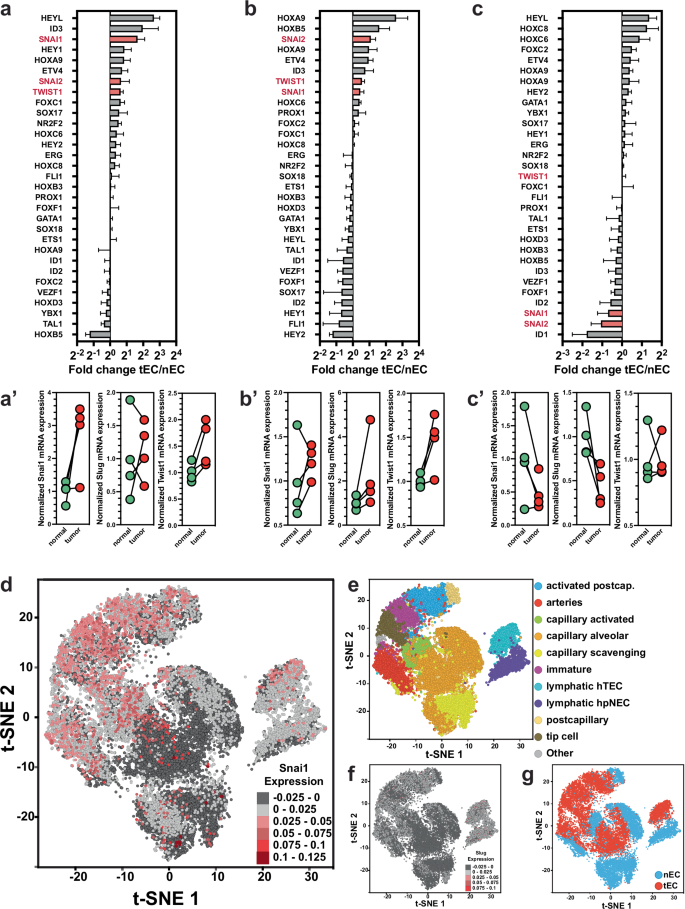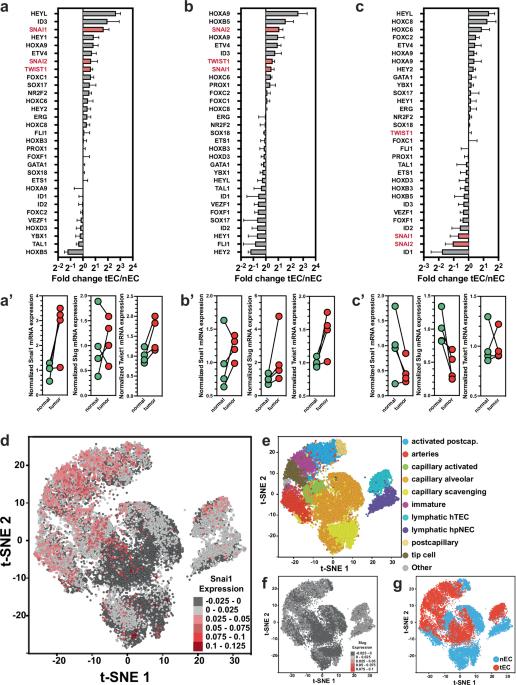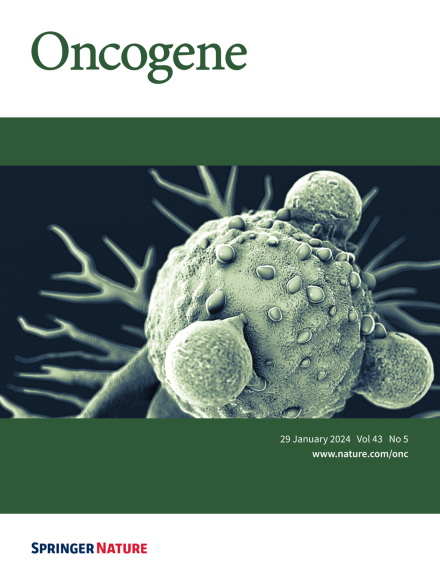Normalization of Snai1-mediated vessel dysfunction increases drug response in cancer
IF 6.9
1区 医学
Q1 BIOCHEMISTRY & MOLECULAR BIOLOGY
引用次数: 0
Abstract
Blood vessels in tumors are often dysfunctional. This impairs the delivery of therapeutic agents to and distribution among the cancer cells. Subsequently, treatment efficacy is reduced, and dose escalation can increase adverse effects on non-malignant tissues. The dysfunctional vessel phenotypes are attributed to aberrant pro-angiogenic signaling, and anti-angiogenic agents can ameliorate traits of vessel dysfunctionality. However, they simultaneously reduce vessel density and thereby impede drug delivery and distribution. Exploring possibilities to improve vessel functionality without compromising vessel density in the tumor microenvironment, we evaluated transcription factors (TFs) involved in epithelial-mesenchymal transition (EMT) as potential targets. Based on similarities between EMT and angiogenic activation of endothelial cells, we hypothesized that these TFs, Snai1 in particular, might serve as key regulators of vessel dysfunctionality. In vitro, experiments demonstrated that Snai1 (similarly Slug and Twist1) regulates endothelial permeability, permissiveness for tumor cell transmigration, and tip/stalk cell formation. Endothelial-specific, heterozygous knock-down of Snai1 in mice improved vascular quality in implanted tumors. This resulted in better oxygenation and reduced metastasis. Notably, the tumors in Snai1KD mice responded significantly better to chemotherapeutics as drugs were transported into the tumors at strongly increased rates and more homogeneously distributed. Thus, we demonstrate that restoring vessel homeostasis without affecting vessel density is feasible in malignant tumors. Combining such vessel re-engineering with anti-cancer drugs allows for strategic treatment approaches that reduce treatment toxicity on non-malignant tissues.


使 Snai1 介导的血管功能障碍正常化可提高癌症患者对药物的反应。
肿瘤中的血管往往功能失调。这影响了治疗药物在癌细胞中的输送和分布。因此,治疗效果会降低,剂量升级会增加对非恶性组织的不良影响。功能失调的血管表型归因于异常的促血管生成信号,而抗血管生成药物可以改善血管功能失调的特征。然而,它们同时会降低血管密度,从而阻碍药物的输送和分配。为了探索在不影响肿瘤微环境中血管密度的情况下改善血管功能的可能性,我们将参与上皮-间质转化(EMT)的转录因子(TFs)作为潜在靶点进行了评估。基于 EMT 与内皮细胞血管生成活化之间的相似性,我们假设这些 TFs(尤其是 Snai1)可能是血管功能障碍的关键调节因子。体外实验证明,Snai1(类似于 Slug 和 Twist1)可调节内皮细胞的通透性、肿瘤细胞迁移的容许性以及尖端/柄细胞的形成。小鼠内皮特异性杂合子敲除 Snai1 可改善植入肿瘤的血管质量。这改善了氧合作用,减少了转移。值得注意的是,Snai1KD 小鼠的肿瘤对化疗药物的反应明显更好,因为药物进入肿瘤的速度大大加快,分布也更均匀。因此,我们证明了在不影响血管密度的情况下恢复血管平衡在恶性肿瘤中是可行的。将这种血管再造与抗癌药物相结合,可以实现战略性的治疗方法,减少治疗对非恶性组织的毒性。
本文章由计算机程序翻译,如有差异,请以英文原文为准。
求助全文
约1分钟内获得全文
求助全文
来源期刊

Oncogene
医学-生化与分子生物学
CiteScore
15.30
自引率
1.20%
发文量
404
审稿时长
1 months
期刊介绍:
Oncogene is dedicated to advancing our understanding of cancer processes through the publication of exceptional research. The journal seeks to disseminate work that challenges conventional theories and contributes to establishing new paradigms in the etio-pathogenesis, diagnosis, treatment, or prevention of cancers. Emphasis is placed on research shedding light on processes driving metastatic spread and providing crucial insights into cancer biology beyond existing knowledge.
Areas covered include the cellular and molecular biology of cancer, resistance to cancer therapies, and the development of improved approaches to enhance survival. Oncogene spans the spectrum of cancer biology, from fundamental and theoretical work to translational, applied, and clinical research, including early and late Phase clinical trials, particularly those with biologic and translational endpoints.
文献相关原料
| 公司名称 | 产品信息 | 采购帮参考价格 |
|---|
 求助内容:
求助内容: 应助结果提醒方式:
应助结果提醒方式:


